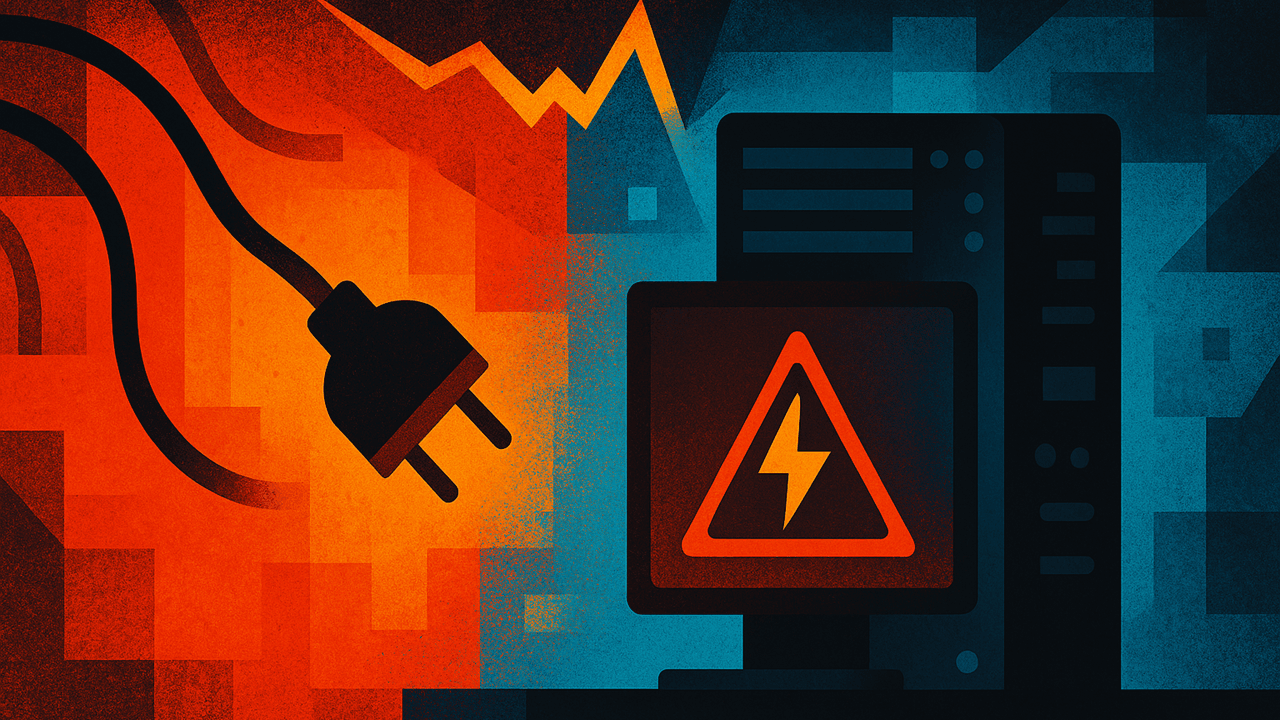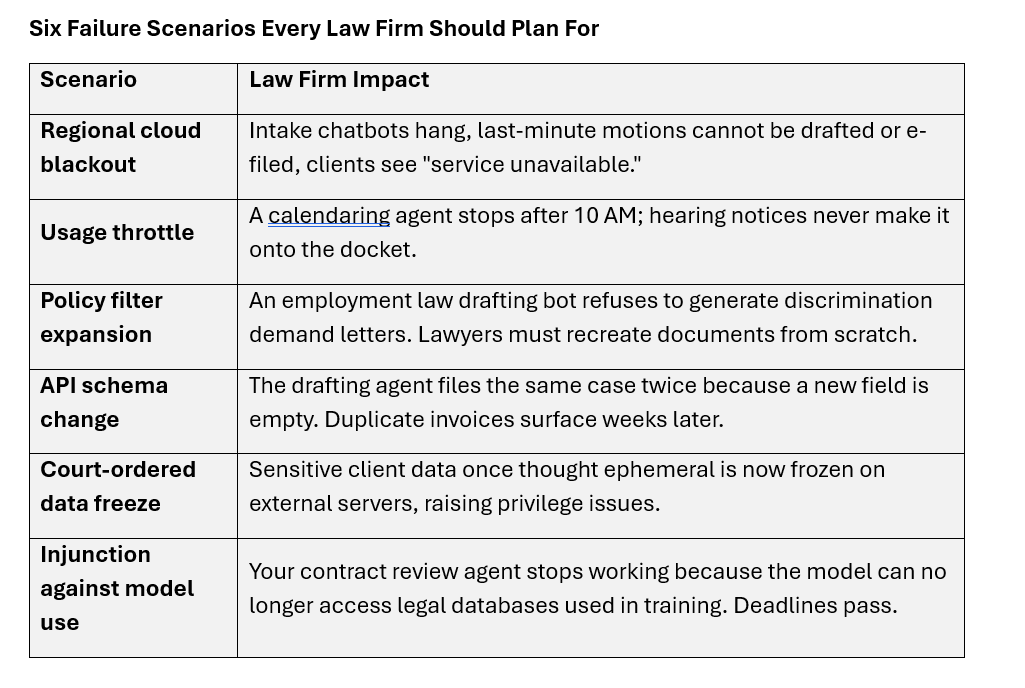AI Blackouts Are Coming: How Law Firms Can Maintain Enterprise Operations During Agent Grid Failure

Google Cloud’s recent outage wasn't merely an inconvenience. It was a preview: What happens when enterprises hard-wire their operations to AI systems that inevitably fail?
The Human Replacement Stampede
Corporate memos now read like termination notices wrapped in tech speak:
- Shopify CEO Tobi Lütke told employees they must "demonstrate why they cannot get what they want done using AI" before asking for more headcount, making AI usage a mandatory performance review metric.
- Duolingo CEO Luis von Ahn announced in April 2025 that Duolingo would gradually stop using contractors for work AI can handle, after already having cut 10% of its contractor workforce in 2024.
- Garfield.Law (UK) gained regulatory approval in May 2025 to run a debt recovery practice almost entirely via AI, charging £2 per letter instead of typical paralegal rates.
Every press release tells the same story: fewer humans are drawing paychecks; more agents are handling their work.
When AI Goes Dark
Just after lunchtime in the U.S. on June 12, 2025, a Google Cloud failure rippled across the internet. Gmail froze, YouTube buffered, and OpenAI's API sputtered. For nearly three hours, the modern workplace went dark.
The outage highlighted a hard reality: When an organization wires its workflow to a single model endpoint, one vendor hiccup can create a firm wide snow day.
Why AI Looks a Lot Like a Power Grid
Electricity revolutionized factories, but prudent owners kept backup generators. Today, a single large language model endpoint functions as the main substation for knowledge work. When it goes down, every downstream process stalls.
Each plugin or API represents a circuit in the grid. Sever one connection and the rest flicker. When something invisible breaks, a lawyer on a deadline may not realize a filing is at risk until it’s too late.

Vendors Still Silent on Redundancy
Microsoft, Google, and OpenAI omit crucial details from their enterprise sales pitches. Even when vendors offer SLAs, they guarantee only 99.9% uptime — still allowing 8.7 hours of downtime per year.
Is your firm ready for nine hours of downtime on your biggest filing day this year? The real trap: as enterprises invest in "agentic workflows" with multiple AI steps, they become hesitant to switch models because their prompts have all been tuned for one vendor. OpenAI's "Connectors" access your Gmail and Drive, Microsoft's Copilot Studio funnels everything through Azure, and Google locks you into its productivity suite. You're not just buying a tool. You are hard-wiring your firm to that vendor's infrastructure.
Most firms miss a critical issue: when you connect your document management system to ChatGPT, OpenAI's data policies may govern your entire client database.
Those promises can change overnight with a terms-of-service update.
Keep the Lights On: 5 Essential Next Steps
Smart firms are building their own redundancy rather than waiting for vendors to solve the problem.
1. Build redundancy into your AI workflows:
Maintain paid access to multiple AI platforms so you can switch instantly. Build using automation tools that retry failed tasks with secondary models. Design multi-agent systems including sub-agents that can continue working even if one of them fails.
**2. Insert human re-entry checkpoints: **
Design each agent flow so that when the AI is uncertain, it stops and asks for human guidance instead of guessing. You would never let a junior associate e-file without review. Hold bots to the same standard.
3. Cache everything locally:
Autosave AI work to internal servers every few minutes to preserve continuity and protect privilege if cloud logs are subpoenaed. Build agents within your firm's secure cloud stack to minimize third-party dependencies.
4. Cross-train your team on AI workflows:
AI readiness shouldn’t rest on one person. Train staff on core workflows so others can step in during absences.
5. Run quarterly blackout drills:
Disconnect your agent API keys for two hours, force your team to operate manually, then patch the biggest pain points you uncover. Test your backup systems before you need them.
What Vendors Don't Want You to Know
The companies selling agent automation have learned a crucial lesson from the cloud wars: making customers dependent generates more revenue than technical superiority. They're not just selling you AI. They're selling you dependency.
As one enterprise leader told Andreessen Horowitz researchers: "all the prompts have been tuned for OpenAI," making switching models expensive and risky. That's not an accident. It's the business model.
Vendors aren’t incentivized to build escape hatches for you. You’ll need to build them yourself. Firms that plan for failure from day one properly treat AI agents as critical infrastructure tools.
Key Takeaway
AI agents promise extraordinary leverage, but the honeymoon is ending. Treat agents like a utility, not a novelty. Build redundancy, watch the gauges, and rehearse a blackout before the (first) real one hits.
Clients won't care how clever your agents are if a critical mistake was made while the grid was down. The firms that survive the coming AI blackouts will be the ones that have planned for them. This week, audit your AI dependencies.
Next month, run your first blackout drill. The stakes are too high to wait.
